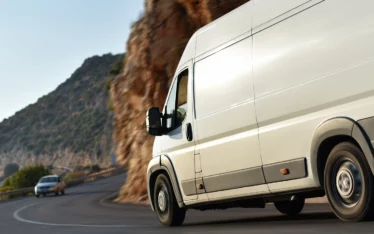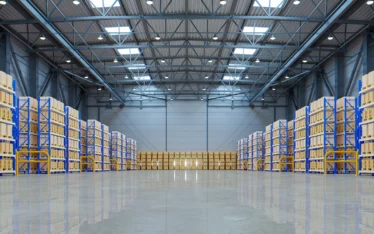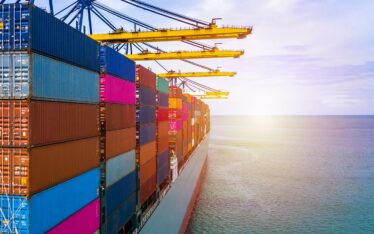Shipping heavy cargo has become easier over the years. With the invention of different kinds of trucks and trailers, you have many choices at your disposal – and they are safe, secure, and cheap. However, shipping large cargo also has issues that you need to address.
An example is when you find it difficult and time-consuming especially when additional permits are required for the goods to be transported. Once you have sorted out those details, you also have to decide on the type of trailer to use. For step-deck shipping, it is best to know what type of load it can accommodate to determine its suitability.
The most prevalent trailers for huge cargos that people can see passing by highways are those trucks carrying flatbed trailers. However, people may not notice that there are trailers that may look similar to these flatbed trailers but these trailers have a lowered 2nd deck carrying loads like tractors, excavators, heavy machinery, construction equipment and building materials. This is actually called a step-deck trailer.
What Is a Step-deck trailer?
A step deck trailer is designed to transport heavy, large, and tall equipment or materials over long distances. Another term for this is a drop deck trailer. It is a shipping platform that is similar to a flatbed trailer that has no roof, no side covers, and no doors. Most step deck trailers have a ramp capability to make it easier to load and unload equipment. What makes it unique is that it has 2 visible deck levels.
The top deck, which is positioned in front near the truck cab, is shorter compared to the bottom deck. The top deck has a length of 11 feet and a width of 8 feet and 5 inches while the bottom deck has a length of 37 feet and a width of 8 feet and 5 inches. The top deck is of the same height, 5 feet, as a flatbed trailer. The bottom deck of the step deck trailer, on the other hand, is around 3 feet 6 inches from the ground. This bottom deck gives a lower center of gravity, which is great for heavy loads.
Related article: One Stop Solution for Intermodal Transportation in Canada
This design was mainly built so that the edge of a tractor would fit perfectly. However, the drop that is featured by the bottom deck is actually used for taller equipment or machinery. With the bottom deck being fitted with smaller tires, height is maximized. Step-deck trailers are allowed to haul cargo with a total weight that does not surpass 48,000 lbs. The maximum length allowed to be transported using a step-deck trailer is 48 feet.
Why Choose Step-deck Trailers?
Even though many of the cargos out there can be transported using a flatbed trailer, there are some factors that would buy ativan 2mg make using step-deck trailers the more viable option. The following factors can be considered in choosing a step-deck trailer to transport specific cargo.
Height Restriction During Transport
There is a height restriction being imposed when transporting taller cargos. Depending on the local laws and regulations, certain cargo may need additional permits for them to be transported using a regular flatbed trailer. But with a step-deck trailer, with its lowered 2nd deck, there may be no more need to get these additional permits if you are transporting this type of cargo.
With cargoes that have a height of more than 9 feet, these can be safely hauled by a step-deck trailer as these can be placed on the lowered 2nd deck. Based on the usual height requirement for transporting cargo without the need of getting additional permits, the maximum height equipment can have for a flatbed trailer to transport is at around 8 feet, while a step-deck trailer can ship equipment that has a maximum height of around 11 feet.
Cost-effective in Bulk
If there are multiple and diverse cargoes needed to be transported, it would be more cost-effective to have these cargoes transported at the same time. As taller equipment and materials are loaded on the bottom deck, the top deck can also be used to transport materials that will not reach a total of 9 feet. By doing so, customers are able to cut, not only on their shipping costs but are able to maximize the time it takes to transport all their cargo.
Stability in Loading and Unloading
It is easier and safer to load tall heavy equipment onto the lowered 2nd deck using forklifts. Most especially for large and extremely heavy equipment that requires more than one forklift. In these instances, the deployed forklifts do not need to raise the forks as high compared to loading heavy equipment on a flatbed trailer. This gives more stability in the loading and unloading of such equipment.
Related article: When to Choose Intermodal Transportation?
Step-deck Trailer for Specific Freight Shipping Needs
Step-deck trailers are an excellent addition to the fleet of trucking companies. Not all types of businesses would have significant benefits from choosing this type of truck. It can be if the cargo is large or heavy. It might even be more cost-effective for shipping in bulk.
In choosing a shipping company to transport your products to customers, delivering on time is one of the key requirements. More importantly, you also want to make sure that your products are safe. For some, there is no other choice but to use a step-deck trailer. However, even if that is not a necessity, you should still consider its merits and see if it is more cost-effective. Remember, too, that because of easier loading and unloading, there is also less risk of damages.




